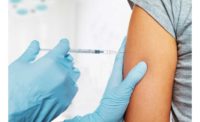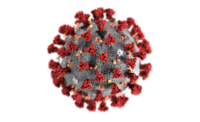Travelers in a handful of major U.S. airports may be noticing some unusual activity at international terminals. As of Friday, Jan. 17, the Centers for Disease Control and Prevention (CDC) and the Department of Homeland Security’s Customs and Border Protection (CBP) began conducting enhanced health screenings to detect ill travelers traveling to the United States on direct or connecting flights from Wuhan, China. The CDC said the screenings are in response to an outbreak in China caused by a new and dangerous coronavirus which has already spread to Thailand and Japan.
Virus "jumped the species barrier"
China health officials report that most of the patients infected with 2019-nCoV have had exposure to a large market where live animals were present, suggesting this is a novel virus that has jumped the species barrier to infect people.
Travelers from Wuhan to the U.S. are undergoing entry screening for symptoms associated with the 2019-nCoV at the three U.S. airports that receive most of the travelers from Wuhan: San Francisco (SFO), New York (JFK), and Los Angeles (LAX) airports.
Risk to American public is low
Based on current information, the risk from 2019-nCoV to the American public is currently deemed to be low. Nevertheless, CDC is taking what it calls, “proactive preparedness precautions.”
“Investigations into this novel coronavirus are ongoing and we are monitoring and responding to this evolving situation,” said Martin Cetron, M.D., Director of CDC’s Division of Global Migration and Quarantine.
Entry screening is part of a layered approach used with other public health measures already in place to detect arriving travelers who are sick (such as detection and reporting of ill travelers by airlines during travel and referral of ill travelers arriving at a US port of entry by CBP) to slow and reduce the spread of any disease into the United States.
CDC is deploying about 100 additional staff to the three airports (SFO, JFK, and LAX) to supplement existing staff at CDC quarantine stations located at those airports.
Early screening not a guarantee
CDC is actively monitoring this situation for pertinent information about the source of outbreak, and risk for further spread through person-to-person or animal-to-person transmission. CDC may adjust screening procedures and other response activities as this outbreak investigation continues and more is learned about the newly emerging virus. Entry screening alone is not a guarantee against the possible importation of this new virus but is an important public health tool during periods of uncertainty and part of a multilayered government response strategy. As new information emerges, CDC will reassess entry screening measures and could scale activities up or down accordingly.
On Jan. 11, 2020, CDC updated a Level 1 Travel Health Notice (“practice usual precautions”) for travelers to Wuhan City and an updated Health Alert to health care professionals and public health partners with new and updated guidance is forthcoming.
Chinese authorities report that several hundred health care workers caring for outbreak patients are being monitored and no spread of this virus from patients to health care workers has been seen. There has been no sustained spread of this virus in the community, however there are indications that some limited person-to-person spread may have occurred.
The CDC is responding to this outbreak out of “an abundance of caution,” ready to detect people infected with 2019-CoV.
For the latest information on the outbreak, visit CDC’s Novel Coronavirus 2019 website.



